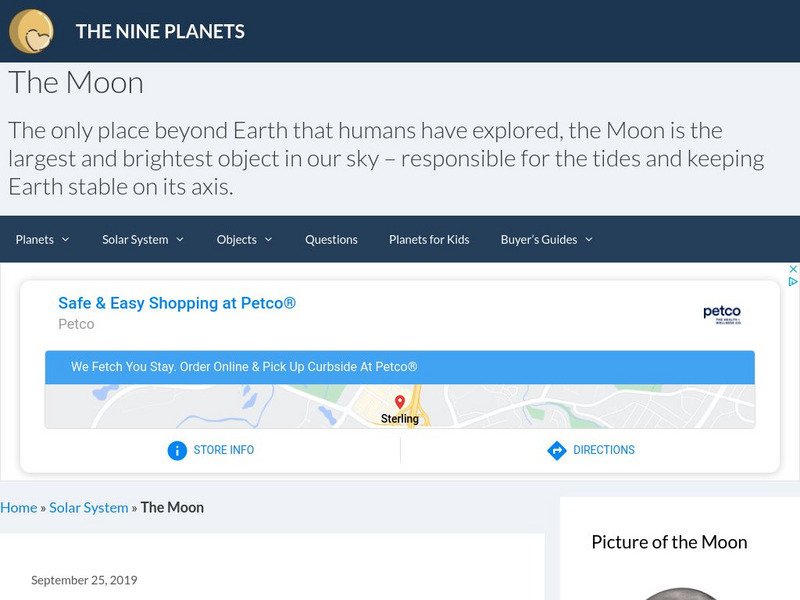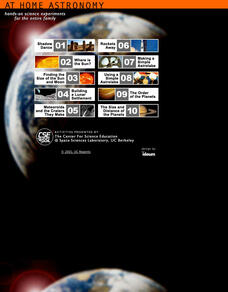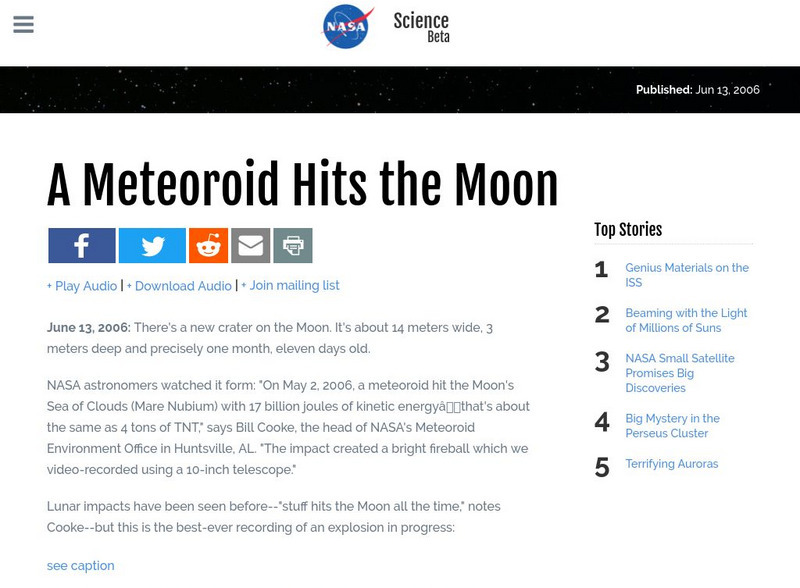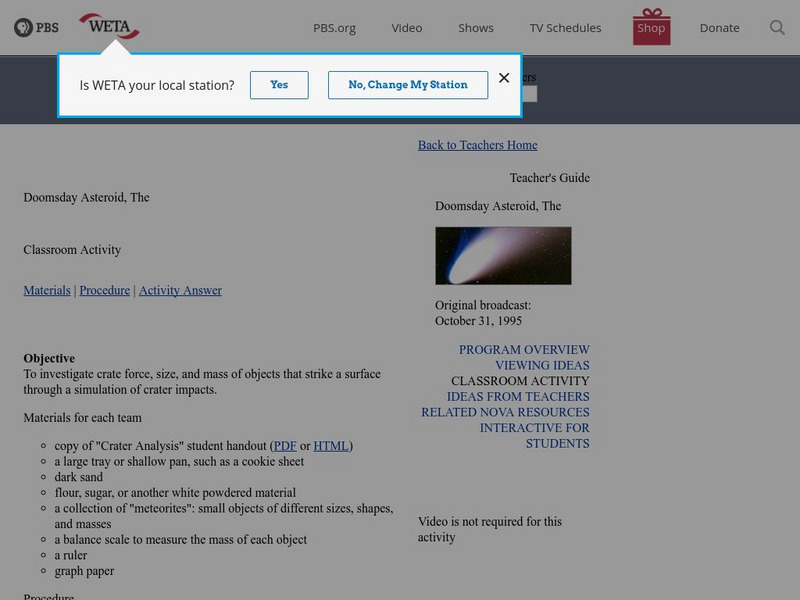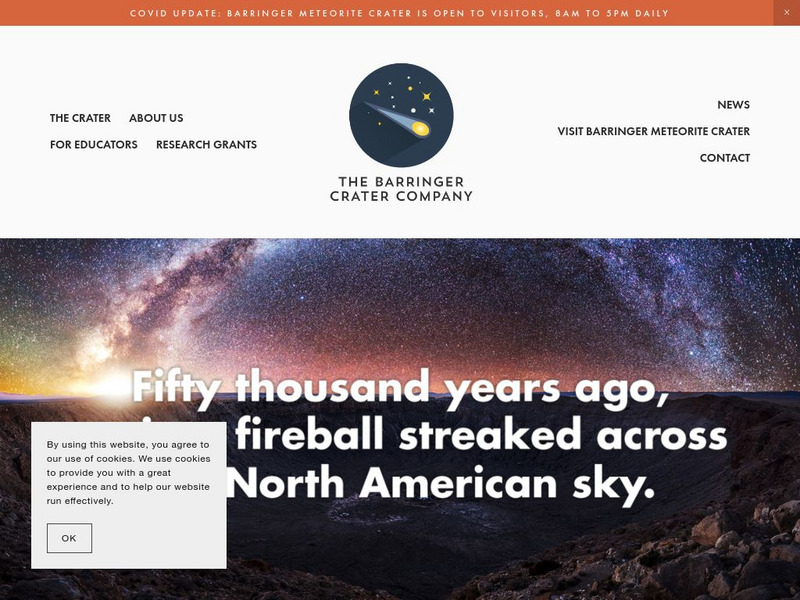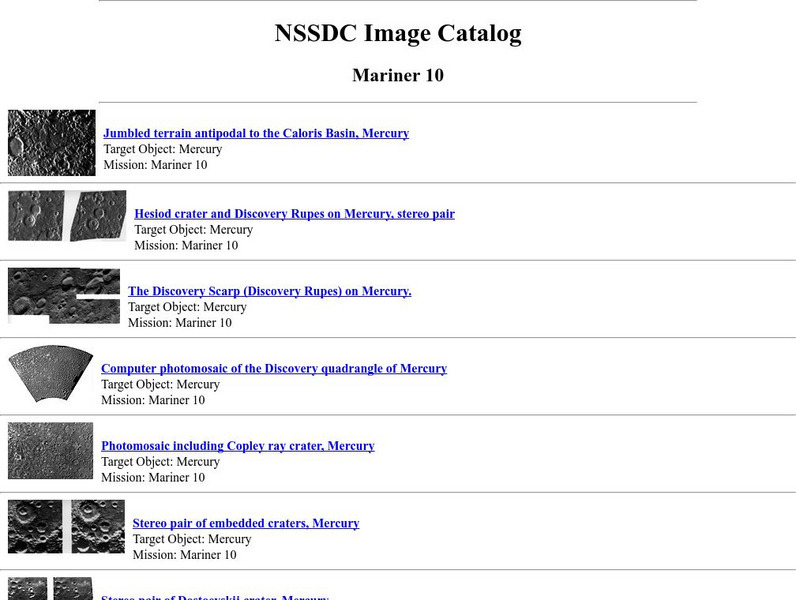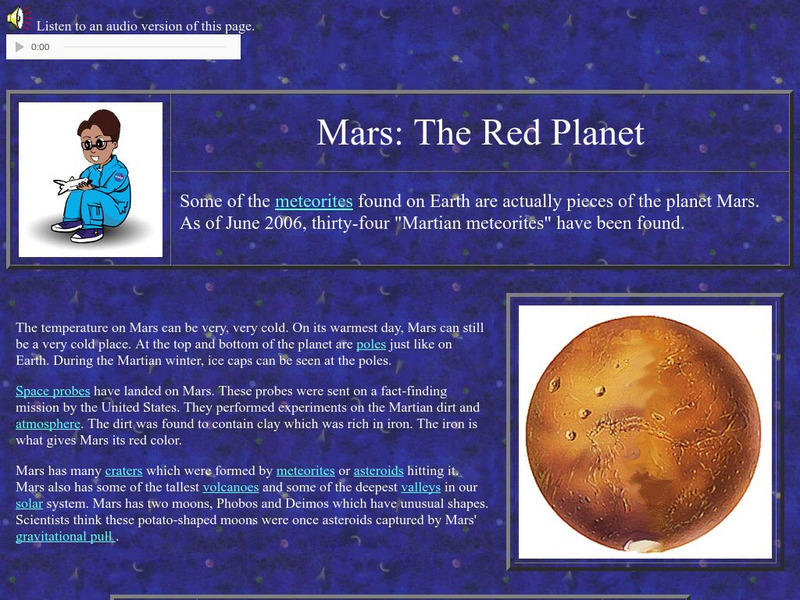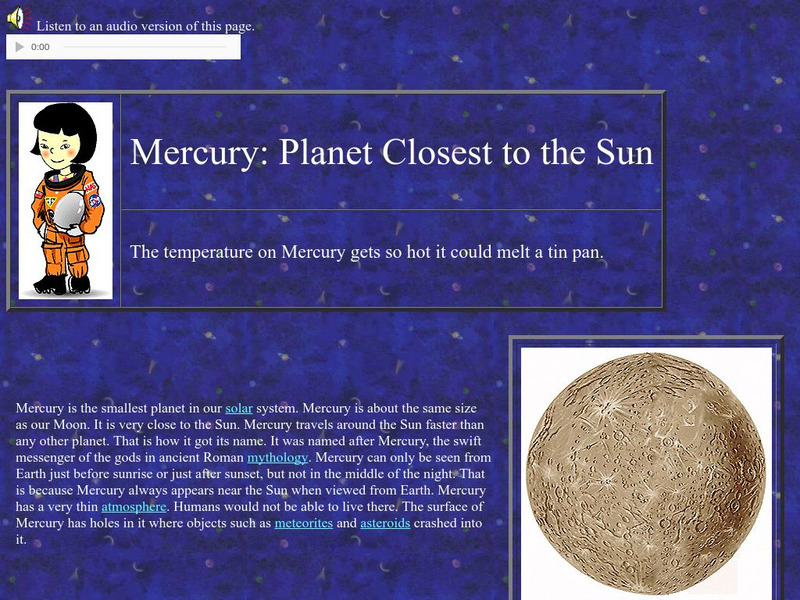University of Hawai'i
University of Hawaii: Mercury Unveiled
New analysis of data returned by the Mariner 10 mission. Includes several photo images. Examines the possibility of volcanism in the history of Mercury and comparisons to Hawaiian and Lunar volcanic events.
Nine Planets
The Nine Planets: The Moon
Explore the mythology, structure, observational history, gravitational force, and orbit of Earth's Moon.
NASA
Nasa Space Science Data Archive: Viking Mission to Mars
This resource provides thorough background information on the Viking Missions and links to detailed data and images.
Utah Education Network
Uen: Trb 3:1 Investigation 2 the Appearance of the Moon
Learn how craters were formed on the moon.
University of California
At Home Astronomy: Hands on Science Experiments for the Entire Family
A collection of ten hands-on science experiments for the entire family that will help you understand concepts in astronomy. Make an astrolabe, find the size of the sun and moon, build a lunar settlement, find out about meteoroids, shadow...
Science Education Resource Center at Carleton College
Serc: Investigating Earth and Moon Surface: Impact Craters
In this activity, students will investigate how impact craters are formed. In small groups, students will build a model of the moon's surface with flour paste and drop a marble from different heights to discover how the speed of an...
University of Hawai'i
Exploring Planets in the Classroom: Impact Craters
Visit this site for a lesson plan on impact craters. Using this simple hands-on activity, students further develop their understanding of how impact craters are formed. A brief introduction about impact craters is given along with some...
NASA
Nasa: A Meteoroid Hits the Moon
On May 2, 2006, a meteoroid hit the moon with a force equivalent to four tons of TNT. The event was captured on a 10-inch telescope equipped with a video camera. The video was then played in slow motion in order to be visible by the...
American Museum of Natural History
American Museum of Natural History: Craters O Logy Card
Flip this interactive card to start learning about craters. Answer multiple-choice and fact-or-fiction questions and review some fast facts.
Other
Siemens Science Day: Earth Science: Impact!
Students complete a hands-on experiment making craters by dropping objects from different heights into flour. Students then explore the craters' differences, based on the objects that were dropped to create them.
Planetary and Space Science Centre
Earth Impact Database: Kara Kul Crater
View satellite images of the Kara-Kul Crater along with data such as its age, diameter, and exact location. The site links with a comprehensive database that allows you to compare impact craters found around the world.
Planetary and Space Science Centre
Earth Impact Database: Siljan Crater
View satellite images of the Siljan Crater along with data such as its age, diameter, and exact location. The site links with a comprehensive database that allows you to compare impact craters found around the world.
Teachers TryScience
Teachers Try Science: Comet Cratering
Use marbles to discover how comets and asteroids make impact craters. This hands-on experiment is easy to do and gives you many variations to try. Included are links to additional information.
Alabama Learning Exchange
Alex: The Moon's Craters
This lesson will help students understand impact craters and infer how they were formed and the reason for their differences in size.
Other
Boston Children's Museum: Beyong the Chalkboard: Crater Maker
Children practice experimenting, measuring, isolating variables, and more while making their own little craters.
PBS
Pbs Teachers: The Doomsday Asteroid
Investigate crater force, size, and mass of objects that strike a surface through a simulation of crater impacts.
Other
The Barringer Meterorite Crater
The origin of the Barringer Meteorite Crater was the basis for heated debate. Learn how the scientific community eventually accepted the impact theory of the crater's origin. Check out this website to view slideshows and history.
NASA
Nasa Space Science Data Archive: Mariner 10 Images
Images of Mercury taken by Mariner 10. Thumbnail images load quickly and link to larger files. Text link provides detailed background information about the mission and its objectives.
NASA
Nasa Star Child: The Moon Earth's Satellite
A summary of our knowledge about the moon, including astronauts who have visited and a short description of what the moon is like.
NASA
Nasa Star Child: Mars the Red Planet (Level 1)
Get to know your next door neighbor in space. An introduction to Mars, the Red Planet. Vocabulary words linked to glossary of terms. Printable version available.
NASA
Nasa Star Child: Mercury
Provides good information about Mercury and is a good starting point for information about the planet along with pictures and audio. Links to a simple fact table, puzzle, glossary, and more detailed information.
Planetary and Space Science Centre
Earth Impact Database: Popigai Impact Crater
View satellite images of the Popigai Crater along with data such as its age, diameter, and exact location. The site links with a comprehensive database that allows you to compare impact craters found around the world.



